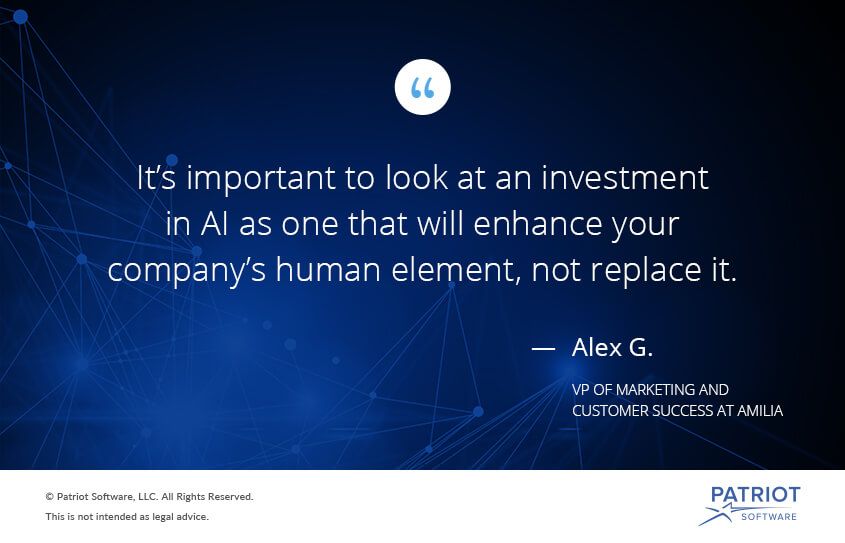Technological advances in the way we do business continue to progress rapidly. The area of artificial intelligence (AI) is one of the most exciting domains that is seeing significant growth, generating a ton of buzz in the business community as a result.
A large number of companies, especially in the world of IT, are either current investors in AI or have it as one of their short-term goals. Many industry leaders believe in the power of this technology, but does it positively impact the customer experience? At the end of the day, people want to interact with real people more than machines, right?
Working with AI, not against it
It’s important to look at an investment in AI as one that will enhance your company’s human element, not replace it. The business world is already seeing the positive effects of machine-learning technology on how organizations interact with their customers.

The breakneck pace of technological progress is also inching AI closer to the point where they’ll be able to detect patterns of consumer behavior faster than humans. However, even in its current state, AI can already help your business improve its overall customer experience in several key ways. Check out our detailed breakdown of those below:
1. Fighting the good fight
Sometimes, there are large client satisfaction issues that humans are incapable of solving without the implementation of AI. We’re not just talking about software patches and updates either—we’re talking about a full-scale monitoring system that would be very difficult to undertake without the helping hand of next-level technology.
A perfect example would be Ticketmaster’s “Verified Fan” screening bots that combat automated scalpers online. Prospective buyers register online. They are then extensively screened before receiving a code that allows them a guaranteed chance to purchase tickets before scalping bots buy up the majority of what’s available.
In short, an omnipresent form of AI not only solved a consistent customer problem, but it also drastically improved the user experience.
2. Stop waiting in line
We’ve all been there: you’ve been on hold for twenty minutes waiting for a customer service representative and, when you’re finally greeted with a human voice, the person on the other end of the line can’t help you with your problem.
They transfer you to another department, which means more on-hold time, more waiting, and a less-than-satisfactory experience. Fortunately, AI is already being used to drastically reduce time wasted shuffling from person to person when you want to talk to support. And, better yet, it takes the guesswork out of the process completely.
For example, many banks use AI on social media to quickly locate your account information and pair you with the right service representative. If a phone call is necessary, a bank employee calls you instead of placing that navigational responsibility on the client. It’s quick, efficient, and a much more positive experience overall.
3. Getting to know you
The amount of data available for AI to digest has never been greater, which means that businesses can use this enormous repository of information to their advantage. Companies can now paint more accurate pictures of their clients, based on the ability to use search data and purchase histories to establish buying patterns and delineate global trends about their industries.
Conceptually, there’s no reason to believe that multiple types of machine-learning software can’t coexist in the same digital environment. Think of the new Amazon Go retail store, which offers a seamless user experience without cashiers or the need to carry any dollar bills with you. It’s all based on synchronizing a shopper’s data with their intricate system of overhead cameras. For the world’s e-commerce leader, AI is already paying huge dividends.
What’s next for AI?
While the inner workings of these smart machines are largely invisible to the average consumer, that doesn’t mean the technology is going away anytime soon. According to MIT Technology Review, more efficient AI algorithms are just around the corner. In the past, machine-learning required lots of computing power to train different forms of AI to recognize different objects, often using tens of thousands of examples to complete the process. However, those days may soon be over.
Researchers working on the next generation of neural network designs are aiming to streamline that training process, where AI could learn to accomplish certain tasks after digesting only a small group of examples. When this idea becomes reality, the resulting commercial ecosystem will greatly benefit many businesses around the world.
Faster response times, more detailed search capabilities and, most importantly, using those techniques to create a more satisfying customer experience – the future of business, with the help of AI, looks bright.
These views are made solely by the author.
